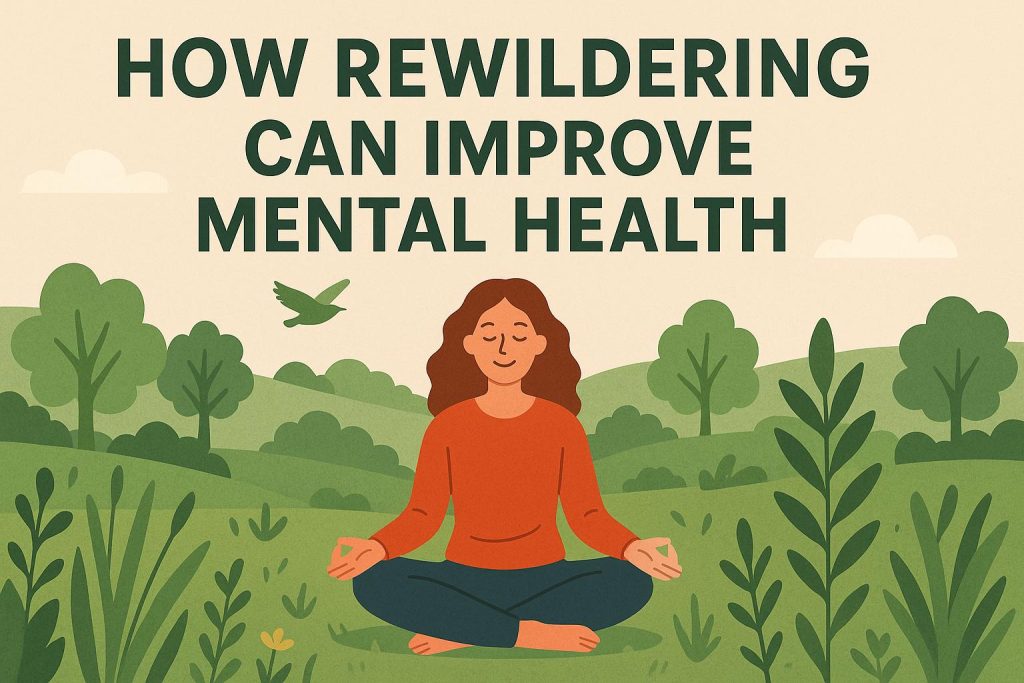
How Rewildering Can Improve Mental Health
Understanding Rewildering
Rewildering, often referred to as rewilding, is an ecological restoration strategy focused on re-establishing and conserving natural processes. It entails the reintroduction of native species and the removal of invasive species, allowing ecosystems to regenerate and evolve with minimal human intervention. This innovative concept is gaining traction, not just for its ecological advantages but also for its potential to positively impact human mental health.
The Connection Between Nature and Mental Health
In recent years, there has been a growing body of research linking natural environments to improved mental well-being. Activities like nature walks, gardening, and simply spending time outdoors have been found to reduce levels of stress, lower blood pressure, and elevate mood. The concept of rewildering magnifies these benefits by creating more spaces for individuals to immerse themselves in nature, untainted by urban development.
Benefits of Rewildering for Mental Health
Rewildering efforts create environments conducive to engaging with nature, which can significantly boost mental health. Here are several mental health benefits associated with rewildering:
Stress Reduction: Engaging with untamed, natural environments has been shown to decrease cortisol levels—a hormone that rises in response to stress. The serene settings provided by rewilded spaces allow individuals to step away from the stresses of everyday life.
Enhanced Mood: The tranquility and beauty found in natural surroundings can uplift mood and mitigate anxiety. Areas that have been rewilded often serve as sanctuaries from the hustle and bustle of city life, providing visitors with a comforting escape.
Improved Cognitive Function: Direct interaction with nature can sharpen cognitive functions, including memory retention and creative thinking. Research indicates that individuals exhibit improved performance on various cognitive tasks after spending time immersed in nature.
Implementing Rewildering Projects
Rewildering initiatives can vary significantly in scale. Some projects may be large undertakings such as restoring expansive national parks, while others may focus on community-level projects like creating local green corridors or urban wildlife havens. Generally, these projects involve key components including:
Species Reintroduction: The reestablishment of flora and fauna native to specific regions is central to rewildering projects, helping to restore ecological balance.
Habitat Restoration: Many rewildering projects involve the rehabilitation of environments that have been degraded or significantly altered by human activity. By restoring these habitats, native wildlife can thrive once again.
Community Involvement: Success in rewildering often hinges on the active participation of local communities. Educational programs and volunteer opportunities encourage individuals to get involved, fostering a community that is aware and supportive of conservation efforts.
Challenges and Considerations
Despite the promising benefits of rewildering for improvement of mental health and ecological restoration, multiple challenges can impede these initiatives. It is essential to consider the following factors for successful implementation:
Long-term Sustainability: Achieving long-term success in rewildering efforts requires meticulous planning and sustained effort. Sufficient funding is vital, as is ongoing community support to maintain and expand upon initial successes.
Resistance to Change: There can be resistance from individuals or groups opposed to changes in land use brought about by rewildering. These concerns often arise due to apprehensions regarding potential human-wildlife conflicts or perceived economic impacts on local communities.
Balancing Human and Wildlife Needs: Another consideration relates to effectively mediating the relationship between restored wildlife populations and nearby human settlements, ensuring that both can coexist harmoniously.
Conclusion
Rewildering represents a multi-layered approach, intertwined with both ecological restoration and mental health enhancement. By encouraging deeper interactions with nature, these projects offer tangible benefits to individuals and communities alike, advocating for the health of ecosystems and human populations. For those interested in learning more about and participating in rewildering, useful resources include organizations such as Rewilding Europe and local conservation groups. Through education and active involvement, collective efforts can lead to enriched natural landscapes and improved mental well-being for society.